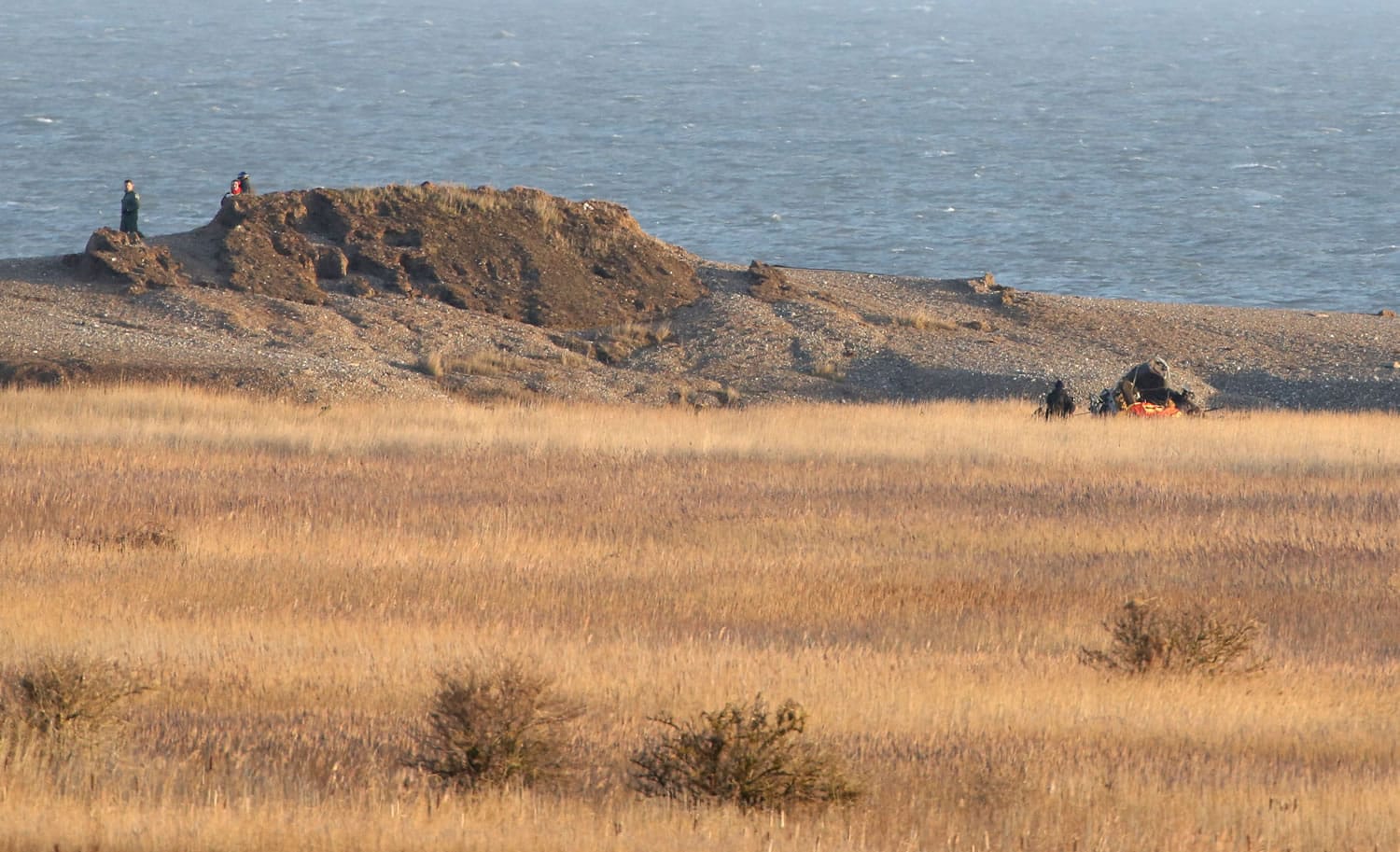LONDON — Authorities in England cordoned off flooded marshes Wednesday to investigate the crash of a military helicopter that killed four U.S. Air Force crewmembers.
The Pave Hawk helicopter slammed into the eastern coast during a low-level training mission Tuesday evening. Teams combing the marshes have been hampered by bullets scattered across the scene and have not yet recovered the crew’s remains.
“We have currently cordoned off about 400 square meters (500 square yards) of the marshland area,” said Chief Superintendent Bob Scully of Norfolk Police. “The crash site itself I would describe as an area of debris on difficult terrain on the marsh.”
Local authorities are carrying out a daylight investigation, and the bodies will be removed afterward. The aircraft was assigned to the 48th Fighter Wing.
The U.S. Air Force identified the victims as Capt. Christopher S. Stover of Vancouver and Capt. Sean M. Ruane, who were piloting the plane, and Tech. Sgt. Dale E. Mathews, and SSgt Afton M. Ponce.
We continue to think of the loved ones who are experiencing such a tragic, sudden loss,” said Col. Kyle Robinson, 48th Fighter Wing commander.
The Pave Hawk copter assigned to the 48th Fighter Wing was based at the Royal Air Force station in Lakenheath. It was flying low at the time of the crash.
Pave Hawks — a modified version of the better-known Black Hawks — are mostly used for combat search-and-rescue missions, mainly to recover downed air crew members or other personnel during war and other hostile situations. They typically practice flying low and fast, often at altitudes of hundreds, rather than thousands, of feet.
The choppers are highly regarded and have no known safety issues, said Peter Felstead, the editor of IHS Jane’s Defence Weekly.
“It’s very difficult to know if there is a mechanical problem or something other than that,” he said, adding the flooded marshes will complicate the recovery of debris.
The helicopter plummeted into the Norfolk Wildlife Trust Cley Marshes Nature Reserve. The aircraft was based at the nearby Royal Air Force station in Lakenheath.
Britain’s Met Office said that nearby Weybourne reported wind gusts of 36 mph (58 kph) at the time of the crash, though sustained winds were weaker. The area near the site has flooded twice.
“We are having very bad weather at the moment,” Felstead said. “If you are in a helicopter and you are flying quite low, if anything does go wrong there’s less chance to correct it.”
Pave Hawks have been deployed in numerous missions, including to Japan in the wake of the tsunami in 2011 and to the southern United States after Hurricane Katrina in 2005. They also support military operations in Afghanistan, Iraq and Libya.
Residents near the crash site said the helicopter sounded unusual just before the accident took place. Sue McKnespiey, who runs the Cookies crab shop in Salthouse with her husband Peter, said the helicopter came over very fast and very low.
“I don’t know about engines but I am used to the sound of helicopters and this sounded very heavy and very unusual,” she said. “My gut instinct was there was something wrong.”



